Section Aigeiros | Scientific name Populus nigra | |
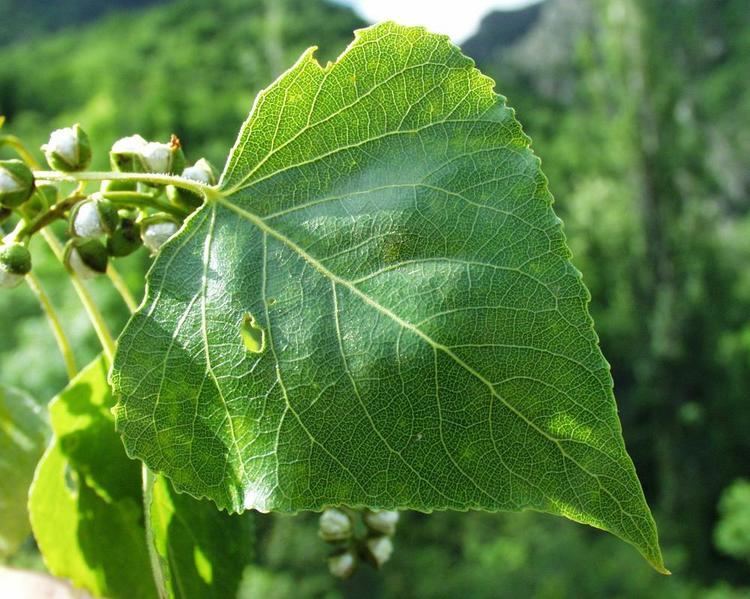 | ||
Similar Cottonwood, Populus alba, Alnus glutinosa, White willow, European aspen | ||
Populus nigra, the black poplar, is a species of cottonwood poplar, the type species of section Aigeiros of the genus Populus, native to Europe, southwest and central Asia, and northwest Africa.
Contents
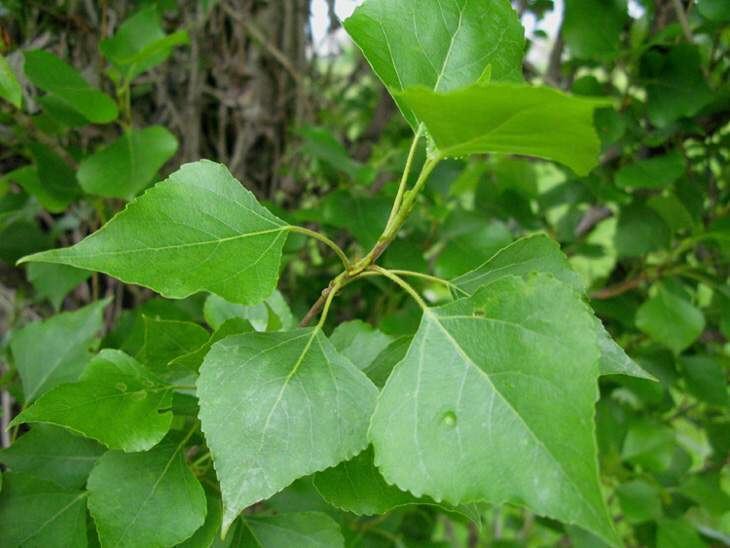
Description

The black poplar is a medium to large-sized deciduous tree, reaching 20–30 m, and rarely 40 m tall. Normally their trunks achieve up to 1.5 m in diameter – however, some unusual individual trees in France have grown old enough to have much larger trunks – more than 3 meters DBH. Their leaves are diamond-shaped to triangular, 5–8 cm long and 6–8 cm broad, green on both surfaces.
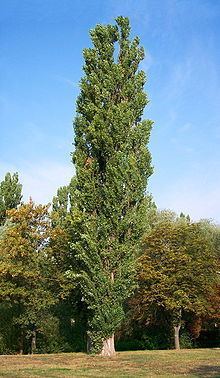
The species is dioecious – male and female flowers are on different plants – with flowers in catkins and pollination achieved by the wind. The black poplar grows in low-lying areas of moist ground. Like most other pioneer species, the tree is characterized by rapid growth and are able to quickly colonize open areas.
Subspecies
There are three established subspecies and some botanists distinguishing a fourth:
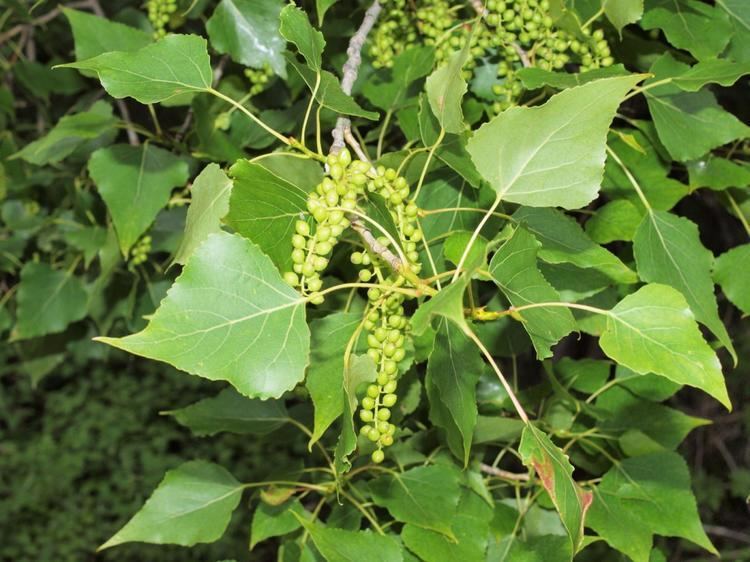
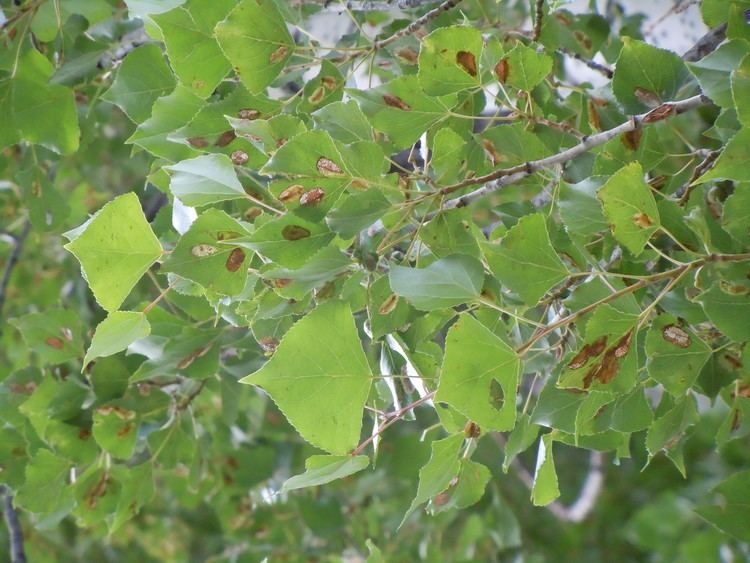
The subspecies betulifolia is one of the rarest trees in Great Britain and Ireland, with only about 7,000 trees known, of which only about 600 have been confirmed as female.
Cultivars
Several cultivars have also been selected, these being propagated readily by cuttings:
As a widely selected species chosen by golf architects in the 1960s, it soon became apparent that the Poplar's very invasive roots destroyed land drainage systems. Decades later the same courses were removing Poplars stands wholesale. At around 40 to 50 years this short lived variety starts shedding branches and are very likely to be blown over in high winds, each successive tree lost exposing neighbouring trees creating a domino effect.
Distribution
Black poplar has a large distribution area throughout Europe and is also found in northern Africa and central and west Asia. The distribution area extends from the Mediterranean in the south to approximately 64º latitude in the north and from the British Isles in the west to Kazakhstan and China in the east. The distribution area also includes the Caucasus and large parts of the Middle East.
